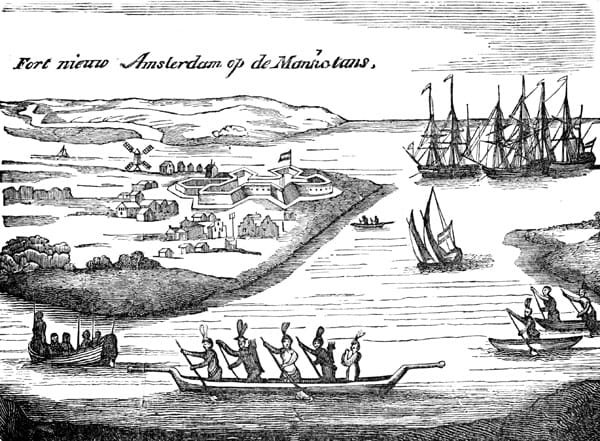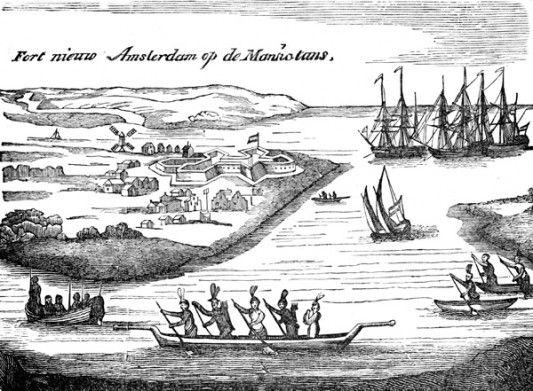Eat Like It's 1626 at The Farm on Adderley


The Farm on Adderley is hosting another interesting historic dinner next Tuesday, February 19. As in a couple of past events, they’re welcoming back ‘historic gastronomist’ Sarah Lohman to host a meal called “Before New York Was New York,” inspired by what people were eating in New York in the 1600s, and the lasting influence of Dutch tastes.
We asked Sarah and The Farm’s chef Tom Kearney about the history that’s inspired the menu.
What was food and food distribution like in New York City during the 1600s, as compared to the 1800s, which you covered at a meal last year?
Sarah: In the 1800s, much of Brooklyn was farmland, so much so that it was NYC’s breadbasket, supplying grains and produce to the city. In the 1600s, Brooklyn would have been “wilderness,” largely settled by native tribes. The earliest European outposts put into place by the Dutch, around 1624, were Midwout (Midwood) and Vlacke Bos (Flatbush), the latter near where The Farm on Adderley stands today.
Tom: Well, the food at this time in the Hudson Valley owes much to Native Americans and Dutch settlers. The Dutch were basically using New York as a trading post. So there were actually some exotic spices and citrus around. They were also a fan of sweets and white flour, which was a rarity.
You’re also seeing less wealthier people using fresh ingredients that were endemic to the region rather than brought in by train, which you would’ve seen in the 1800s. The Erie canal was not even a thing yet. By the 1800s the Erie Canal was hugely influential on the distribution of food.
You’re also not seeing refrigeration, which was in place by the 19th century. Ice was commonly shipped long distances and used to preserve food. Preservation methods in the 17th century relied on salt curing, fermentations, and drying mostly.
What were they eating here during the 1600s?
Sarah: Traditional Dutch food mixed with native ingredients and cooking styles. The Dutch we big fans of stews and porridges they could sop up with bread, and on Long Island they started make them with cornmeal instead of wheat or barley. Additionally, the Dutch brought to America pretty much everything sweet and delicious: donuts, cookies, pancakes, and waffles to name a few. They were excellent and creative bakers.
New Amsterdam was fairly short lived — the English took control in 1664. But Dutch immigration continued through the rest of the 17th century.
How have you been planning for this meal?
Tom: I’ve been reading the writings of Peter G. Rose, a Dutch food historian who writes about the region at this time. We also did a dinner recently (American Cookery) which dealt with the history of Thanksgiving. The first Thanksgiving took place very near this date, and I had read a bunch of stuff from the Plimoth Plantation and the Smithsonian.
Can any of the styles of food still be seen in our cuisine today?
Sarah: Absolutely — see above! The dutch word for cookies is “koekjes;” the Anglicization of “koekjes” that gave us the name cookies. Cookies is a very American word — in other parts of the world, they were/are called biscuits or cakes. And what New Yorker hasn’t had a Cruller donut — the name kruller is also a Dutch word.
The Before New York Was New York dinner is on Tuesday, February 19 at 7:30pm at The Farm on Adderley, 1108 Cortelyou Road. The meal is $60, plus beverages, tax, and gratuity. To sign up, contact thefarmonadderleyevents@gmail.com.



